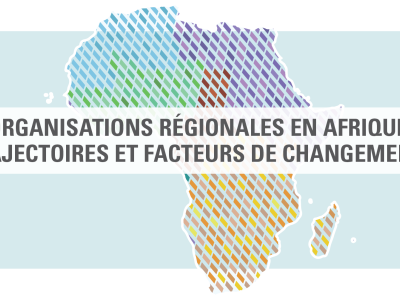
The Curious Case of Environmental Standards and its Trade Impact: An Integrated Indian and Norwegian Perspective
This article reveals the dichotomy of environmental standards and eco-labels in the global textile market. Whereas on the one hand, the labels provide necessary information and guideline in the complex textile market, the knowledge of eco-labels is limited to consumers worldwide. On the other hand, these standards impede trade, keeping the producers away from vital markets in Europe and North America.
Introduction
The dismantling of the quota regime from international trade in the Textiles & Clothing (T&C) sector and lowering of tariffs was expected to generate more production, employment and export. However, with the advent of globalisation, patterns in the textile sector began changing. Today, one witnesses a shift from a ‘production-led’ to a ‘demand-led’ mode of production, as a result of which the importance of retail activity has increased.
Consumption patterns and consumer taste in industrialised countries suggest increasing environmental & other concerns due to rising levels of air, water and soil pollution, leading to evolution and increasing adoption of regulations aimed at protecting the environment. This has naturally resulted in an increased emphasis on issues of quality control and management, traceability and certification, which is found challenging by producers in developing countries for various reasons. This is important especially when production base has gradually shifted from developed countries to developing.
This article is based on the triangulation of data and methods under the project entitled ‘A Study of Environmental Standards & its Trade Impact on Indian Textiles & Clothing Sector’ (1): The goal of this study was to promote dialogue on environmental standards and labels between producers in the South and consumers in the North, especially those associated with India and Europe. It was based on a range of surveys, workshops and interviews conducted with producers in the T&C sector in India and consumer associations and consumers in select European countries of Germany, France, England, Norway and Sweden, as well as other stakeholders such as retailers, brands etc in Norway.
Awareness about Environment Problems for Sustainable Development
Both the Norwegian and Indian stakeholders agree that the T&C industry is facing environmental challenges and the survey shows that there has been an increasing understanding on the environmental impact on the industry among these stakeholders. However, the designer community in Norway is more specific and informed. On the other hand, the growth in the T&C sector in India tells a compelling story of sustainability-related challenges faced by it. The Indian survey and capacity building programmes demonstrate that T&C manufacturers are aware of the environmental impact of the textile production along the supply chain and some of them have also attempted to address these challenges (Table 1). However, it has been pointed out by stakeholders that the industry lacks resources to take the necessary steps to adopt these practices at a greater scale.
| Table 1: Environment Friendly Activities | |
| Sample Size (n=105) | |
| We properly dispose the waste products | 20 |
| We try not to harm the environment | 18 |
| We have sense of responsibility to preserve the environment | 10 |
| We maintain eco-friendly environment | 5 |
| We recycle the waste products | 5 |
| We follow the necessary norms | 3 |
| We use latest technology | 3 |
| We do not waste materials unnecessarily | 3 |
| We strictly follow eco-label norms | 3 |
| We try to avoid pollution | 2 |
| Others | 12 |
| Don’t Know Can’t Say | 21 |
The survey in India further attempted to capture the awareness and level of conformity of others in the supply chain, such as knitters, spinners, weavers and ginners as they are the most important suppliers to textile and garment manufacturers. Approximately 39-40% of the textiles and garments companies surveyed stated that they insist their suppliers follow eco-friendly practices (about 50% according to industry associations surveyed). The survey points out that textile companies feel that, although the suppliers are aware of the standards and the compliance requirements, they are not interested in making the extra effort required for compliance. Further, the acquiring of such certifications among the Indian textiles and clothing manufacturers is low, due to cost and other technical barriers. This then acts as a barrier to market entry.
Environmental Standards and Eco-labels: An Evaluation
Nevertheless, the growth experienced by the T&C industry has increasingly stimulated the industry to address the sustainability challenges in the textile production chain. Owing to this, an increasing number of T&C firms are paying more attention to these issues and the most popular approach seems to be adoption and conformity with eco-labelling. The two key driving factors for textile and garments companies for adopting environmental standards and various eco-labeling schemes are:
- Better acceptance of products in international market; and
Consumer recognition and demand.
Almost one third of the interviewed stakeholders have ranked ‘Better acceptance of product in international market’ as the most important reason for subscribing to environmental standards. Furthermore, the survey in India points out that among several environmental standards, the majority of respondents (73%) are aware of ISO (International Organization for Standardization) 14001 and about 65% of Registration, Evaluation, Authorization, and Restriction of Chemical (REACH).
Figure 1 illustrates the relationship between exports and environmental compliance of T&C firms in India. There is an upward sloping relationship between the two, indicating that exports do increase with environmental compliance. In other words, better compliance with environmental standards reduces uncertainty in market access.
When it comes to adherence to these standards, the survey depicts that environmental standards such as REACH and Global Organic Textile Standard (GOTS), that are applicable to the EU, are widely complied with by the Indian T&C sector as Europe is a major export destination for these firms.
A large number of European consumers, who are well-aware of eco-labelling schemes, agree that such schemes can be trusted and help them make better choices while shopping. Interestingly, the survey suggests that European consumers are more aware of their respective national eco-labelling schemes as against the regional/international.
With regard to environmental concerns while buying clothes, the sensitivities differ from country to country as depicted in Figure 2. Norwegian consumers are least concerned about the environment while buying clothes when compared to consumers in Germany, France and Sweden. Overall, respondents across Europe strongly believe that their respective governments must take strong initiations towards popularising eco-labelling programmes and making the T&C sector environmentally sustainable.
Are Eco-labels an Effective Communicative Tool? The survey findings attempt to provide some clue to the degree to which eco-labels are looked upon as an effective tool in the textile market dialogue. The positions of various actors vary and reflect their interests, both in India and Norway. The surveys in Norway and other European countries suggest that there is jungle of labels in this sector, which may not be an issue for consumers as only a few of these labelled clothes are found in the market. However, this certainly poses challenges for the industry and the retailers. It becomes more complex when global companies like H&M prefer using global or at least regional labels like the EU flower on their products, whereas some, such as the foundation for Eco-labelling in Norway, would rather place their focus on smaller national labels like the Nordic Swan because the consumer knowledge about this label is already high. These conflicting ways and solutions to the challenges connected to labelling further create another barrier for the success of eco-labels.
The jungle of eco-labels creates confusion and bewilders producers in India as to which environmental standards/eco-label to adopt. Other issues associated with compliance of eco-labels are that small and medium-sized enterprises (SMEs) in India need substantial cost for upgrading their level of technology in order to meet foreign environmental standards and the cost of compliance is considerably higher for Indian T&C firms.
Figure 3 (3) Incremental Cost of Environmental Compliance by Indian T &C firms
In the stakeholders’ workshop in India, it was argued that harmonisation and mutual recognition of different eco-labels would be beneficial for all stakeholders and that there is a need to rationalise the existence of different eco-labels. A possible solution would be to have a single eco-label for a particular region/sector so that compliance becomes simple.
Conclusion
The main conclusion taken from this study is that the increasing understanding of the environmental impact of textile production and consumption has not, so far, materialised into effective policy tools to meet these challenges. While in Norway the various stakeholders may clearly see their individual contributions as meeting the challenges, they are still waiting for consumers’ response in the market. On the other hand, the consumer survey and stakeholder interviews identify this as a problematic strategy. Consumers are confused, and producers deterred from adopting an ever-growing array of environmental certification schemes.
There is a need to enhance networking activities among these relevant eco-labelling schemes. Global Eco-labelling Network is working in this area. However, it needs to work more towards mutual recognition of standards, whereby countries would develop eco-labelling schemes that recognise the differing conditions and environmental standards of exporting countries. The harmonisation of international labelling standards to facilitate compliance with eco-labelling requirements could also be a solution.
Furthermore, going green and more responsible has now become an immediate and compelling necessity for textiles companies in India. Without certifications, companies would find it much harder to prove their sustainability credentials and draw benefits from them. Indian producers have to prepare themselves for new environmental standards and labelling regimes. This is necessary because large global textile players are taking initiatives to enhance environmental standards in their supply chain processes, despite the lack of pressure from other stakeholders and consumer demand.
Thus, the answer to dealing with this issue is striking a balance between safeguarding market access and protecting environment. The key is to set appropriate standards and enable exporters to meet them.
Archana Jatkar is Coordinator & Deputy Head at the CUTS Centre for International Trade, Economics & Environment.
Footnotes
- The full study is available at www.cuts-citee.org/SESTI/pdf/Report-Environmental_Standards_Trade-A_Study_of_Indian_Textiles_and_Clothing_Sector.pdf
- From Austgulen, M.H. and Stø, E, 2103. Barriers to the success of eco-labels for textiles, a report from stakeholders interviews in Norway. Oslo: SIFO, Project report 1-2013
- From Austgulen, M.H. and Stø, E, 2103. Consumer perspectives on eco-labelling of textiles,, a report from online consumer survey in select European countries. Oslo: SIFO, Project report 1-2013
This article was published in GREAT Insights Volume 2, Issue 8 (November 2013).


